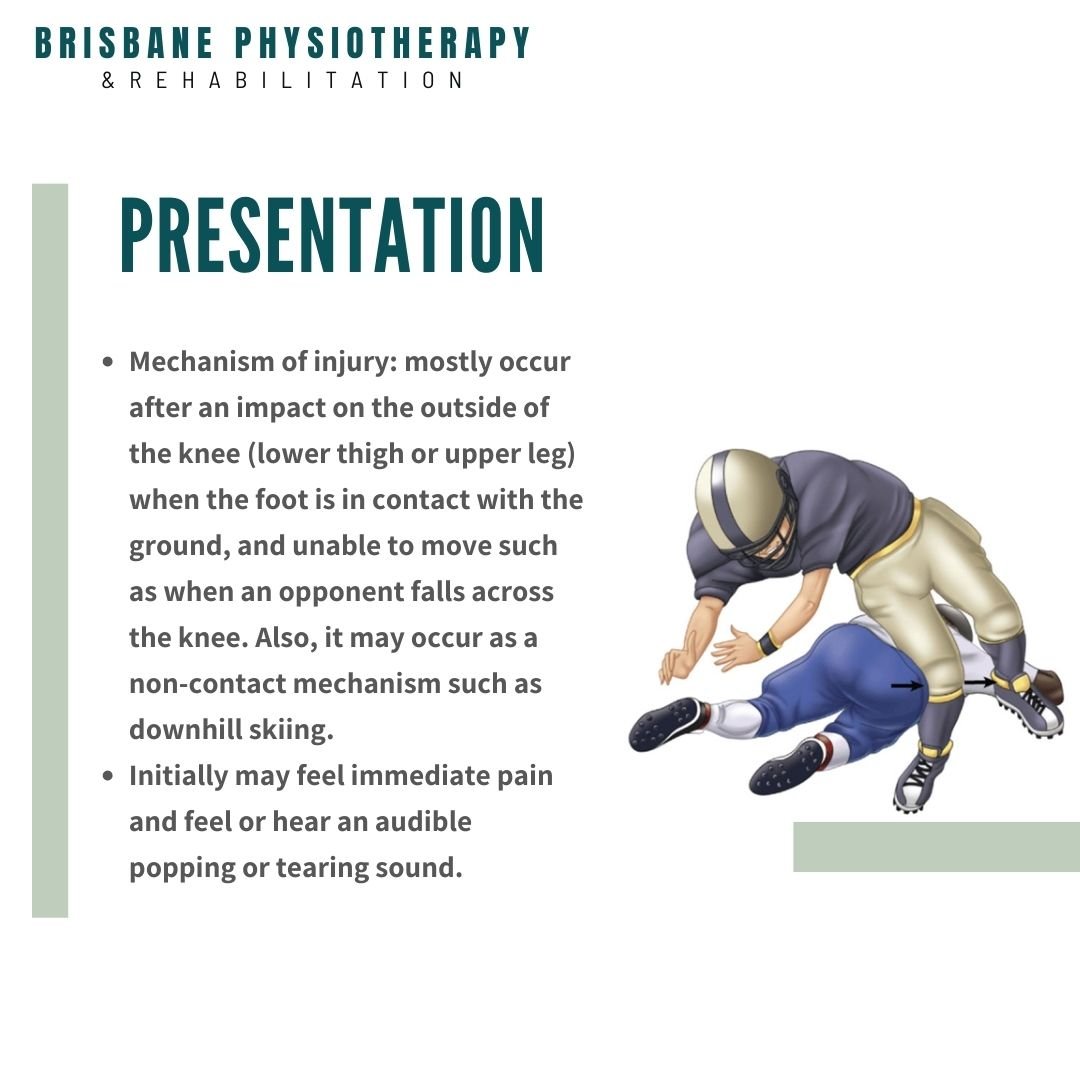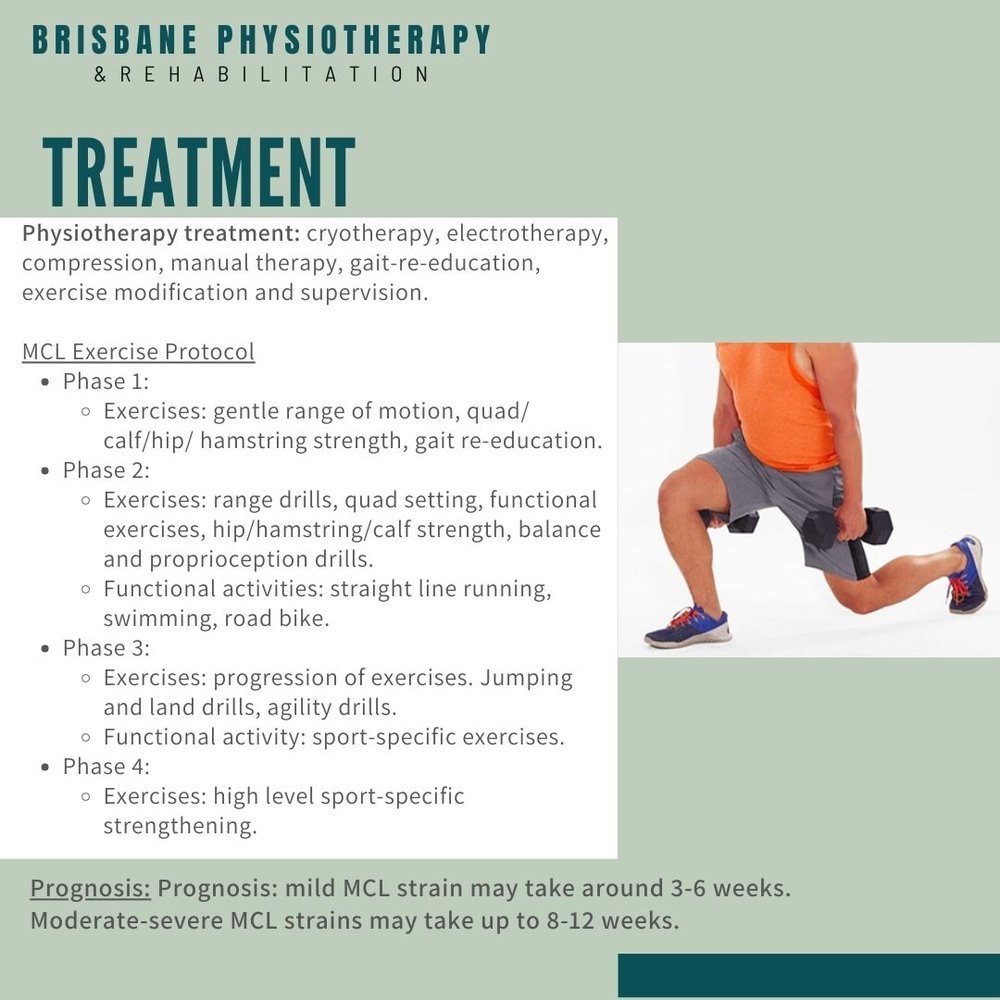MCL Injury
What is a MCL Injury?
Overview of MCL Injuries
MCL Injury Description
The Medial Collateral Ligament (MCL) is a strong flat band of connective tissue that runs along the medial (inside) part of the knee joint.
The MCL is one of the four ligaments that are critical to maintaining the mechanical stability of the knee joint.
The MCL is divided into superficial and deep ligaments.
Function: The medial collateral ligament is recognized as being a primary static stabilizer of the knee and assists in passively stabilizing the joint.
MCL injuries often occur in sports, being the most common ligamentous injury of the knee, and 60% of skiing knee injuries involve the MCL)
MCL Injury Symptoms & Presentation
An MCL injury is a common knee injury, typically caused by impact or a direct blow to the outside of the knee (lower thigh or upper leg) or by a force that pushes the knee inward when the foot is in contact with the ground, and unable to move such as when an opponent falls across the knee. Also, it may occur as a non-contact mechanism such as downhill skiing. The MCL on the inside of the knee will become stressed due to the impact. The MCL is a band of tissue on the inner side of the knee that helps stabilise the joint. When the MCL is injured, it can result in pain, swelling, and instability in the knee.
Initially may feel immediate pain and feel or hear an audible popping or tearing sound.
MCL Tear Classification
MCL tears are classified on the basis of their severity:
Grade I (mild, first degree): local tenderness over the MCL, usually no swelling. When stress is applied to the ligament there is pain but no laxity. Ligament integrity is intact.
Grade II (moderate, second degree): marked tenderness, sometimes with localized swelling. When stress is applied to the ligament there is pain with some laxity with a distinct end point. Ligament integrity is compromised but intact throughout its length.
Grade III (complete, third degree): results from a severe force on the MCL that causes a complete tear of the ligament fibers. Often complain of feelings of instability and a ‘wobbly knee’. The amount of pain is variable and frequently not as severe as one would expect given the nature of the injury. Tenderness over the ligament. When stress is applied to the ligament there is a gross laxity without a distinct end point. Some degree of swelling is present.
Managing a MCL Injury
MCL Injury Treatment/Rehabilitation
The treatment of MCL injuries involves a conservative rehabilitation program. Patients with grade III MCL injuries that have been treated conservatively have been shown to return to sport as well as those treated surgically.
Rest: Resting the knee is essential in the initial stages of recovery to allow the ligament to heal. Avoiding activities that aggravate the injury is crucial.
Physiotherapy: Physiotherapy exercises can help improve and restore range of motion, strengthen the muscles around the knee, improve stability and provide a structured return to sport plan.
Bracing: In some cases, wearing a brace to support the knee may be recommended, especially during activities that put stress on the ligament.
Medication, elevation, ice and compression: Can all be utilised to help reduce pain and inflammation.
Surgery: Surgery is rarely needed for isolated MCL injuries. However, in severe cases where there is significant instability in the knee or if other ligaments are also injured, surgery may be necessary to repair the damaged ligament.
Rehabilitation of MCL injury:
Phase 1:
Goals: Control swelling, Knee flexion to 90-100+ degrees, Allow +20-30 degrees extension, 4/5 quadriceps strength, 4+/5 hamstring strength.
Physiotherapy treatment: cryotherapy, electrotherapy, compression, manual therapy, gait-reeducation.
Exercise program: gentle range of motion, quadriceps setting, supported calf raises, hip strengthening, hamstring strengthening, gait re-education drills.
Phase 2:
Goals: eliminate swelling, full knee range, 4+/5 quadricep strength, 5/5 hamstring strength. Return to light jogging.
Physiotherapy treatment: cryotherapy, electrotherapy, compression, manual therapy, gait-reeducation, exercise modification and supervision.
Exercise program: range drills, quad setting, functional exercise prescription, hip/hamstring/calf strength, balance and proprioception drills.
Functional activities: straight line running, swimming, road bike.
Phase 3:
Goals: full knee range, full strength, full squat, dynamic proprioception training, return to running and restricted sport-specific drills.
Physiotherapy treatment: manual therapy, exercise/activity modification and supervision.
Exercise program: progression of exercises – increase difficulty, repetitions and weight. Jumping and land drills, agility drills.
Functional activity: sport-specific exercises.
Phase 4:
Goals: full strength, knee range and endurance. Return to sport-specific drills and restricted training and match play.
Physiotherapy treatment: manual therapy, exercise/activity modification and supervision.
Exercise program: high level sport-specific strengthening.
Prognosis
Mild MCL strain may take around 3-6 weeks
Moderate-severe MCL strains may take up to 8-12 weeks.



